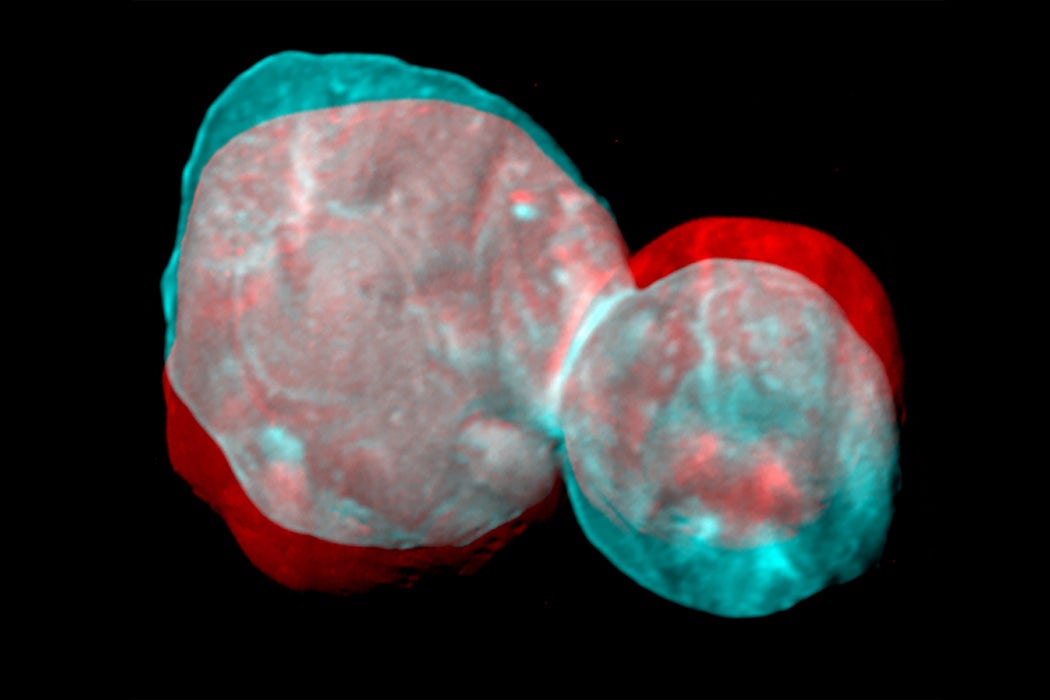January 1, 2020 will be the first anniversary of the spacecraft New Horizon’s visit to Arrokoth, a minor planet 4 billion miles away from ours—the farthest object ever visited by a spacecraft. If that name doesn’t sound familiar to you, it may be because it changed back in November—before it was Arrokoth, it had been known as Ultima Thule.
As fitting a name as it was (connoting a place beyond the known world), it also carried baggage. The Thule Society was an antecedent to the German Nazi Party, and the phrase has been associated with alt-right and Neo-Nazi groups.
So, one might ask, how do astronomical objects get their names? In a 2012 article by Sethanne Howard, we learn that “[t]he answer varies slightly with the object, and history plays an important part.”
The International Astronomical Union (IAU) has the responsibility for and oversight of nomenclature, as well as defining what constitutes a planet (major or minor.) In 2006, their definitions led to the loss of Pluto from the nine major planets, and left schoolchildren with the new mnemonic “My Very Excellent Mother Just Served Us Nachos.”
For a minor planet, the first name will be a number—in this case 2014 Mu69 (the year of first observation). Then a permanent designation will be made. Once this number is assigned, the person who discovered the object is given 10 years to suggest a name that meets IAU criteria: 16 letters or less, preferably one word (which is how minor planet Misterrogers happened), non-offensive, and not too similar to an existing one. Names with political or military significance must be suggested at least 100 years after the fact.
Weekly Newsletter
In an article in The Atlantic (published before the change was announced), Marina Koren wrote on the issues around “Ultima Thule”—was it “non-offensive,” she asked? Would an existing asteroid named Thule make this name duplicative? While some interviewed worried about needing a new PR push if the name changed, others wanted to “reclaim” the words.
The chosen name, Arrokoth, translates as “sky” in the Algonquian language spoken by the Powhatan tribes of Native Americans, who lived in the Maryland area with connections to both the spacecraft and telescope that first observed it. As New Horizon’s Principal Investigator Alan Stern said at the NASA naming ceremony, “’Arrokoth’ reflects the inspiration of looking to the skies, and wondering about the stars and worlds beyond our own.”







